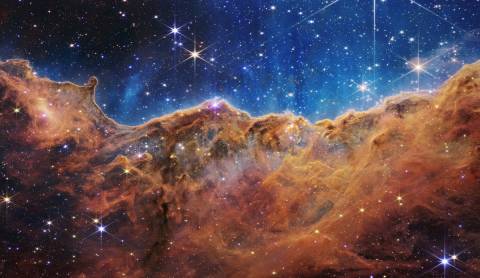The James Webb Space Telescope opened big on 12 July, with five full colour-images of the cosmos unlike any seen before.

And it never stopped. The big space telescope, a project of NASA and the European and Canadian Space Agencies, is almost constantly taking images and downloading data into the Barbara Mikulski Archive for Space Telescopes, many of which have been processed and shared by Nasa, the Space Telescope Science Institute, or individual scientists.
Webb has revealed images of deep purple spiral galaxies arms, cosmic cartwheels, the structure around supermassive blackholes, Jupiter and its moons, and the most distant galaxy known in the universe, GLASS-z13, as it existed just 300 million years after the Big Bang.
On Tuesday, Webb took a deeper look at the part of the sky where Hubble recently discovered the most distant known star in the universe, Earendel, using the gravity of a galaxy cluster closer to Earth to magnify the distant star’s light and image.
With so many images coming down, and a decade’s worth of science to go, it can be hard to keep track of Webb’s latest findings.
Nasa does release some of the images through its blogs and the space agency’s dedicated Webb telescope webpage at nasa.gov/webb. Nasa will also share images and news of Webb through social media, such as the dedicated telescope twitter account, @NASAWebb.
Lastly, the Space Telescope Science Institute, in Baltimore, which operates Webb for Nasa, posts the Webb observation schedule for each week online. On 7 August, for instance, Webb will be observing “High-redshift galaxies, Quasars,” that is, very distant galaxies and the supermassive black holes at their cores.
The Space Telescope Science Institute also offers an overview of Cycle 1 observations, all the objects Webb will view during its first year of operations.
Read MoreBody of co-pilot who exited plane before emergency landing is found in North Carolina
Webb telescope reveals colourful cosmic cartwheel
Black holes may determine which stars go unborn, and how many flicker to life
